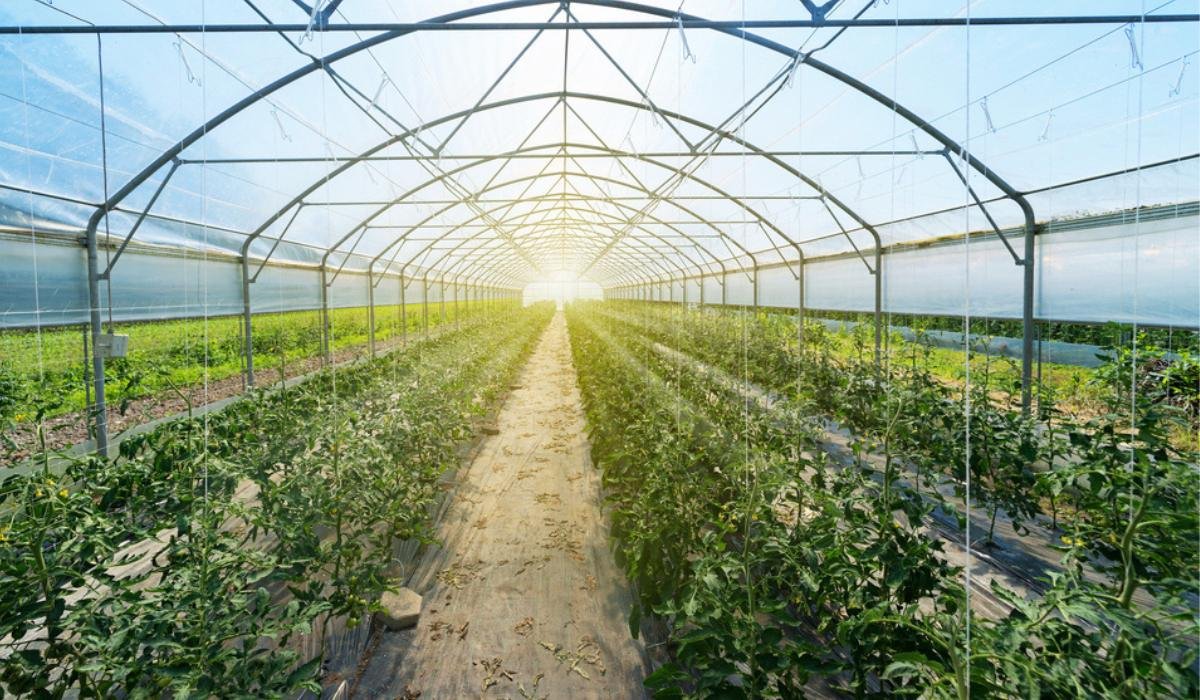Building Desires, Expanding Environment-friendly: Monarch Greenhouse Builder Utah at Your Solution
Wiki Article
The Future of Greenhouses: Innovations in Lasting Farming
Are you interested concerning the future of greenhouses and how they are revolutionizing sustainable agriculture? Look no more! In this article, we will discover the interesting developments that are leading the way for a greener and extra efficient farming sector. From sophisticated environment control systems to upright farming strategies, water-efficient watering techniques, renewable resource integration, and smart data analytics, these developments are transforming the means we expand our food. Prepare yourself to uncover the future of sustainable agriculture in greenhouses!Advanced Environment Control Equipment
To attain ideal growing problems, you can rely upon the developments in greenhouses with sophisticated environment control systems. These systems have transformed the means we cultivate plants, offering a controlled environment that contributes to plant development. With these cutting-edge systems, you can currently control temperature level, humidity, light levels, and even CO2 concentrations to create the perfect conditions for your plants to flourish.One of the crucial features of these sophisticated environment control systems is their ability to control temperature level. By making use of sensors and automated controls, the greenhouse can readjust the temperature based on the specific needs of the plants. This makes certain that they are never exposed to extreme warm or cool, which can be detrimental to their development.
Moisture control is another crucial aspect of these systems. By maintaining the perfect moisture levels, you can protect against issues such as mold and mildew, mold, and condition from influencing your plants. These systems can additionally manage the amount of light that gets to the plants, ensuring that they receive the optimal amount for photosynthesis.
Furthermore, progressed climate control systems can also control carbon dioxide focus. By increasing the degrees of CO2 in the greenhouse, you can enhance plant development and performance. This is particularly helpful in areas with low all-natural carbon dioxide levels.
Vertical Farming Methods
One essential upright farming strategy is making use of piled growing systems. Piled expanding systems are frequently made use of in city locations where room is restricted.One preferred approach is known as vertical hydroponics, where plants are expanded in nutrient-rich water without dirt. This strategy is very reliable as it lowers water use by up to 90% contrasted to traditional farming methods. Additionally, since the plants are grown indoors, they are protected from pests and diseases, lowering the demand for chemicals.
One more method is aeroponics, which includes suspending the plant roots in a haze or air setting. This method enables optimum nutrient absorption and oxygenation, causing faster development and higher yields. Aeroponics likewise makes use of less water than traditional farming and can be carried out in vertical systems, making it a prominent choice for upright farming.
Water-efficient Watering Techniques
Making best use of water preservation is vital when it pertains to executing water-efficient watering techniques in lasting farming. With international water scarcity becoming a pushing concern, it is important to establish cutting-edge techniques that maximize water usage in greenhouse operations.One promising method is drip watering, which supplies water straight to the plant origins, reducing waste and evaporation. By utilizing a network of tubes with tiny emitters, water is applied slowly and specifically, guaranteeing that plants receive the necessary wetness without excess drainage.
One more reliable strategy is using soil dampness sensing units. These gadgets determine the dampness content in the soil and offer real-time information to farmers. By monitoring the dirt's moisture degrees, farmers can precisely identify when and just how much water to use, stopping over-irrigation.
In addition, the execution of rain this contact form harvesting systems a fantastic read is getting popularity in greenhouse agriculture. Accumulating rainwater from roofs and storing it in containers enables farmers to utilize this natural source for watering objectives, minimizing dependence on conventional water resources.
Finally, the fostering of automated irrigation systems can dramatically improve water performance. These systems make use of sensing units to identify dirt wetness levels and weather condition problems, changing irrigation routines as necessary. By enhancing water usage based on real plant requirements, these systems can reduce water waste and advertise sustainable farming methods.
Renewable Power Integration
Sustainable energy integration in greenhouses supplies numerous benefits, including reduced running expenses and reduced reliance on non-renewable energy resources. The produced power can then be made use of to run different operations within the greenhouse, such as air flow, heating, and lights systems. These wind turbines harness wind power and transform it into electrical power, which can be used to supplement the power requirements of the greenhouse.Smart Data Analytics and Automation
To boost the efficiency of your greenhouse operations and enhance source application, consider executing wise information analytics and automation. Smart you can check here information analytics entails collecting and examining information from numerous sensors and devices within your greenhouse.
This can consist of automating the control of lights, air flow, watering systems, and nutrient shipment. By automating these processes, you can make sure that your plants receive the best conditions and nutrients at the ideal time, without the demand for continuous hands-on intervention.
Additionally, smart data analytics and automation can interact synergistically. The data collected by sensing units can be made use of to notify automated systems, allowing them to make real-time changes based upon the present conditions. This integration of data analytics and automation can result in much more accurate and effective resource allotment, inevitably leading to greater yields and much better crop top quality.
Final Thought
In verdict, the future of greenhouses in sustainable farming looks encouraging. With sophisticated environment control systems, upright farming techniques, water-efficient irrigation approaches, and renewable energy assimilation, greenhouses are becoming much more ecologically pleasant and reliable.
By optimizing water usage based on actual plant needs, these systems can decrease water waste and advertise lasting farming practices.

Report this wiki page